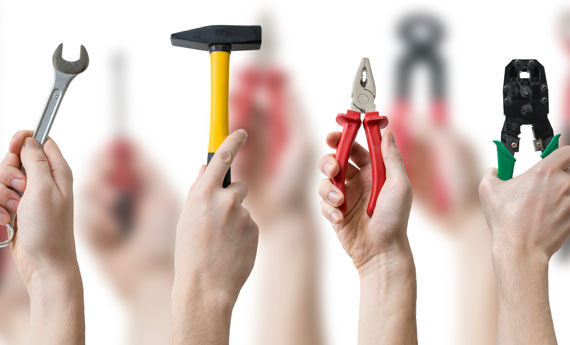As a landlord, your property is a huge investment. Whether you manage one home or a hundred, you want to make sure that you protect your investment and, of course, keep your tenant’s home a safe and healthy place to live.
One of the most common questions that we are asked as letting agents is: what maintenance projects are the responsibility of the tenant, and what jobs fall to the landlord? The short answer is that rental property maintenance is a shared responsibility. Nevertheless, the law sets out some simple rules about who should arrange and pay for specific repairs, and what landlords and tenants should each do to look after the property.
Up next: Tenant Rights When Renting Property In 2021
Structure and fabric of the building
Looking after the structure and fabric of the building is your job as a landlord. Your tenant has to take reasonable care not to cause damage to the home they’re living in and to let you know if they spot a problem. Fixing any problems which come up, though, is your responsibility. You also need to make sure that regular preventative maintenance is carried out to a high standard, to prevent further problems from occurring.
Tenants should take good care of the property – including things like cleaning and keeping an eye out for any issues – but once any problems have been reported to the landlord, it’s not the tenant’s job to put them right. If you don’t arrange your rental property maintenance promptly, your tenant can take legal action against you and you could be prosecuted by the local council.
If you’re reading this and currently need to do any repairs to your property, why not get a free quote from a trusted tradesperson with Bark. You can find trusted tradesmen and get free quotes for almost any job.
Utilities and rental property maintenance
As well as the building itself you, the landlord, are responsible for the basic utilities: gas, water, and electricity. You must make sure that each is installed to the right safety standards, that they are regularly checked and serviced by a qualified person, and that the property has all the right safety certificates.
Appliances and white goods
When it comes to appliances and white goods, the rules are slightly more complex.
Anything that can be classed as a sanitary necessity, so the toilet, bath, shower, kitchen sink – and the associated plumbing and electrics – are your responsibility as a landlord. The law says that it is also your job to look after the heating, gas or electric; hot water and plumbing; pipes and drains; and any gas appliances.
Put simply, anything that’s not on that list – for example, a fridge/freezer – is the tenant’s responsibility. If, however, any furniture or appliances are provided as part of the tenancy agreement (most often in a furnished property) then it is the landlord’s job to repair or replace them if they break.
Safety equipment
As a responsible landlord, it is also up to you to make sure that you provide appropriate safety equipment in your property. This means smoke and carbon monoxide alarms – and checking they work – as well as anything else which a risk assessment deems is needed. Your local fire service may offer a complimentary assessment.
In some properties, especially student properties or HMOs, this might also mean fitting and maintaining fire doors, extinguishers, and full alarm systems. You may also be responsible for ensuring multiple escape routes from HMOs and larger properties.



